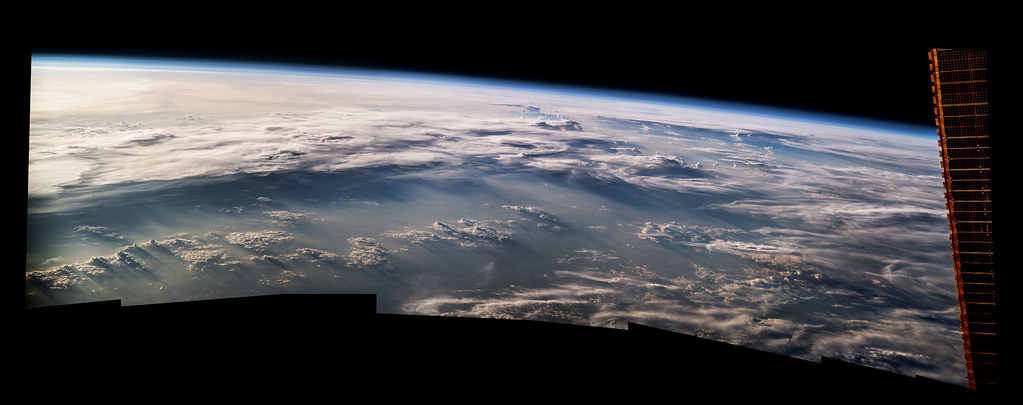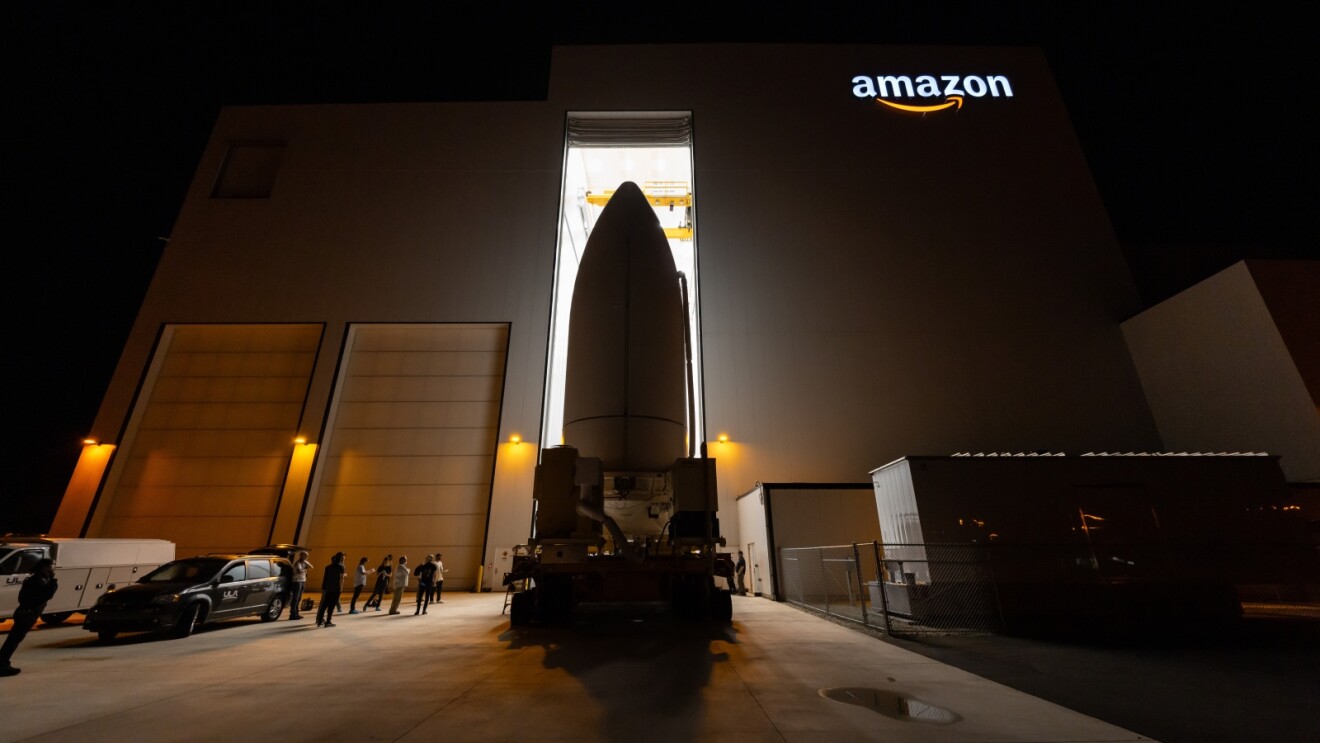By: Julia Seibert
You might not see it, but space technology has taken over the world. From farming to communication to warfare, countless Earthly systems would collapse were the space ecosystem to go poof. But Earth isn’t big enough for this ambitious industry; driven by advancements in technology and a healthy dose of geopolitics, colonizing other worlds is once again a hot topic. If it succeeds, life will be forever changed.
What is the Space Ecosystem?
The space ecosystem isn’t just one thing; it’s a web of every entity and technology involved in space. When it began at the height of the Cold War some 70-odd years ago, it was comparatively simple; you had the US’s NASA on one side and the Soviet space program on the other. But over time, more players joined the game. Satellites soon proved their uses for navigation, communications, land monitoring, and more, spurring interest from militaries and telecommunications companies. Countless technologies developed for space, like solar panels and vertical farming, transformed a slew of Earthly industries. Many more countries established space agencies, most notably China, which has since become a space superpower. In the last decade or two, a new wave of (mostly American) commercial companies hit the scene; the advancements in technology and lowered launch prices they brought about have made space more accessible than ever before.
Key Sectors Within the Space Ecosystem
Satellite Technology and Applications
You’d be hard-pressed to find an Earthly niche that doesn’t somehow involve satellites. State-owned navigation constellations, like the US’s GPS or China’s BeiDou, are used by both militaries and tourists. Television signals are bounced off monster satellites lurking far out in orbit. Some Earth observation sats (like NASA’s) monitor crop health and climate change; others peek at conflict zones or track an enemy’s movements; others still keep an eye on oil reservoirs or factory activity to predict stock prices.

Space’s commercial renaissance opened the sector to younger, hipper companies with flashier tech. Launch giant SpaceX’s Starlink constellation, for example, beams down high-speed internet to anywhere in the world. It’s also begun launching satellites providing complete cell service as well as internet connection. Younger Earth observation companies like Planet Labs, Maxar, and Spire Global have made satellite data more ubiquitous than ever. Meanwhile, as space junk and ageing satellites threaten the bustling scene, companies like Astroscale are developing ways to repair or deorbit them.
Space Exploration and Research
Though humans haven’t left Earth’s orbit since 1972, space agencies like NASA and China National Space Administration (CNSA) frequently send robotic explorers deep into space; recent examples include China’s Chang’e probes and NASA’s Psyche mission or James Webb telescope. There’s also a wealth of science happening in Earth’s orbit; telescopes including Hubble, Chandra, and TESS take snapshots of the darkest depths of the universe, while astronauts aboard the International Space Station (ISS) and China’s Tiangong station research, among other things, space’s effect on crops, zebrafish, and the human body. Technology developed for space exploration has also transformed lives and industries on Earth, such as advancements in solar panels, pacemakers, and search and rescue systems (to name a few); in 2012, NASA estimated that 444,000 lives have been saved thanks to its technology.
But now, humans are set to take center stage in exploration again. NASA and CNSA are both aiming to land humans on the moon within the decade, with NASA’s plan relying on commercial companies. This, plus the accompanying military interest, is slowly causing the industry to turn its attention to deep space, bringing new technology with it; this might include cargo landers by Intuitive Machines and Astrobotic, or crew landers by SpaceX and Blue Origin. The latter two also harbor private exploratory plans; SpaceX’s ultimate goal is to build a colony on Mars, while Blue envisions massive space stations hosting millions of people and entire industries. In the meantime, Blue, in partnership with Sierra Space, plus a few other companies (including Axiom, Voyager, and Airbus) are planning to send up the first commercial space stations in the next decade.
Space Tourism
These stations would not only serve NASA and co., but could also function as space hotels; for the first time, lowered launch costs have made space tourism a real possibility. But that doesn’t mean it comes cheap. SpaceX can launch you to orbit for the low, low price of $200 million; at least, that’s roughly what billionaire Jared Isaacman paid for the 2021 four-person, all-civilian Inspiration4 mission. Isaacman and his crew recently completed the first mission of his private Polaris program, also with SpaceX, and has booked another two flights – one on the Dragon spacecraft, one on the massive Starship rocket – for the rest of the program. SpaceX also collaborates with Axiom, who arranges stays on the ISS. Still, orbital flights require months, if not years, of training. For those short on time – or cash – there’s the suborbital services of Virgin Galactic and Blue Origin, which cost $650,000 and about $1.25 million, respectively. For a less fiery option, companies like Space Perspective and World View plan to send tourists to the edge of space on stratospheric balloons.
Space Mining and Resource Utilization
The commercial space scene has given way to some truly wacky projects, like mining asteroids or the moon – but if exploration plans go ahead, they’ll be dearly needed. One such venture is Astroforge, a startup gearing up to mine asteroids for precious metals. There’s also Blue Origin’s Blue Alchemist, a method for turning lunar soil into solar panels. Interlune, a startup founded by two ex-Blue employees, is focused on scouring the moon for helium-3: a substance that could prove crucial for nuclear fusion energy. The nifty element is also being pursued by China’s state program.
Economic Impact of the Space Ecosystem
The space industry was worth a cool $630 billion in 2023, but since it interacts with pretty much every industry on the planet in some way, its true economic impact is hard to discern. The GPS system alone, for example, had generated $1.4 trillion in economic benefits since the 1980s, when it was made available to civilians (according to Research Triangle Institute, as of 2019). Elsewhere, the space industry can rustle up economic prosperity without even leaving the planet. Projects like NASA’s Artemis program and Europe’s ArianeGroup (the main contractor for its Ariane rockets) don’t launch very often, but employ thousands of contractors spread across the US and Europe; the jobs these create are sometimes more valuable than the project itself.
Challenges Facing the Space Ecosystem
Space comes accompanied by some obvious technical and financial risks – it is, after all, literally rocket science – but that’s the least of its problems. Among its hairier modern dilemmas is supply chain; today’s surging demand for rapidly mass-produced satellites clashes with traditional space supply chains, which hail from a time when satellites took decades to build. Couple that with the pandemic and war in Ukraine, which have throttled supplies of precious metals and satellite propulsion, and you’ve got yourself a problem. If that weren’t enough, financial and regulatory apprehension– especially in Europe – can further slow progress, leaving some projects unable to keep up with the breakneck pace at which the industry has been evolving. And once something does reach orbit, there’s the burgeoning issue of space junk to deal with, set to get worse as thousands more satellites prepare to launch.
How the Space Ecosystem is Shaping Our Future?
If you believe futurists like SpaceX’s Elon Musk, space is a deciding factor in humanity’s survival; he often argues that a colony on Mars could save humanity from extinction were something to happen to Earth.
But the space ecosystem’s role in our future is more complex than that. On one hand, the sector has made the world more interconnected than ever before; on the other, it highlights and magnifies Earthly rivalries and flaws, such as the competition between the US and China or humanity’s tendency to leave behind a trail of trash wherever we go. As the sector evolves, therefore, these patterns are set to evolve also. In Earth’s orbit, this is already ongoing. For example, the lower access barrier to orbit has not only boosted its commercial status, but its military one too; both the US and China are now developing weaponry to mess with each other’s satellites and defend their own.
With both nations (and many of the US’s companies) now setting their sights on the moon and beyond, these habits will probably continue. Again, the missions might bring some benefits – say, greater knowledge about the universe or access to helium-3. But as seen in orbit, humanity’s promise goes hand in hand with its flaws; already, the US and China’s Earthly rivalry is spilling over into their lunar programs. So while the space ecosystem might change what the future looks like, it won’t change its essence: paradoxically human.
Share this article:











